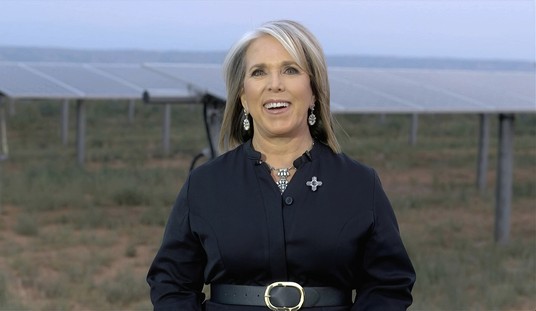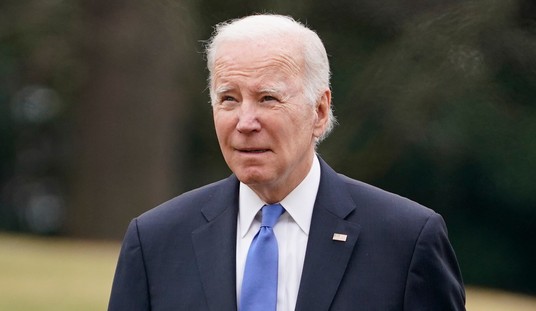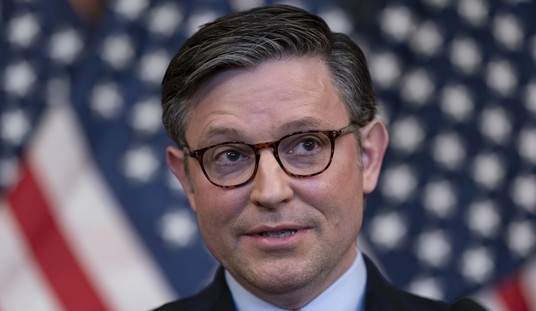
Louisiana Governor Bobby Jindal today released his tax plan, an ambitious policy proposal that combines pro-growth economic policy with tax simplification, a side order of populism, and a long-range view about the importance of taking the obligations of citizenship seriously. Jindal’s plan may not be the easiest sell or the most poll-tested product in the race, and there are fair debates to be had in comparing it to other candidates’ tax plans, but it represents a serious effort to think about the long-term sustainability of our approach to taxation.

The Tortoise In The Tall Corn
In a crowded presidential field, Jindal has sought to distinguish himself as the GOP’s idea man, the guy who combines the most detailed policy plans and the experience as a battle-tested executive who has fought not just Democrats but the establishment in his own state party to bring consequential conservative reforms to Louisiana. Jindal has previously released plans I have covered here on healthcare and energy, and has also released plans on education and defense as well as a fairly terse paper on his proposal for ending “sanctuary cities” for illegal immigrants. On today’s conference call introducing the tax plan, he also promised that there will be plans forthcoming on entitlements and on governmental reform.
It hasn’t been easy going amidst the Trump circus, the Bush machine, the streaking comets of Ben Carson and Carly Fiorina, and competition from other young conservative stars like [mc_name name=’Sen. Ted Cruz (R-TX)’ chamber=’senate’ mcid=’C001098′ ] and [mc_name name=’Sen. Marco Rubio (R-FL)’ chamber=’senate’ mcid=’R000595′ ] – I’ve done a number of these conference calls, and the only one that drew a lot of mainstream media reporters was when his campaign managers rolled out Jindal’s still-ongoing campaign of speeches and web videos mocking Donald Trump, calling him a dangerous narcissist and comparing him to Charlie Sheen and characters from Anchorman and Zoolander. Indeed, earlier in the campaign, Jindal joked that he would just randomly drop Trump’s name into his speeches in the hopes of getting some media coverage.
Jindal by necessity has embraced his underdog status and is betting his entire campaign on the Iowa Caucuses, where he is just beginning to gain some traction in the polls. He promised on today’s call that “We’re gonna win Iowa,” and if he doesn’t at least finish second (or maybe a very strong third), it’s hard to see how he’ll remain in the race – he has obviously budgeted his lightly-financed campaign to get as far as the Iowa Caucuses on February 1, and there’s no reason to think he’ll be forced to bow out earlier like the more expensive, high-burn-rate campaigns of Scott Walker, Rick Perry, and possibly [mc_name name=’Sen. Rand Paul (R-KY)’ chamber=’senate’ mcid=’P000603′ ] and (if things go sour enough) Jeb Bush. But Jindal will almost certainly be broke after Iowa, so he will need a good showing there to convince donors large and small to refuel his campaign.
The good news is that he’s beginning, gradually, to get the movement he needs. Jindal was in a three-way tie with Rubio and Cruz for fifth in the last NBC/Wall Street Journal poll of Iowa, and now stands in eighth place in the RCP Iowa Average at 4%. That may not sound like much, but Jindal’s 6% in the NBC/WSJ poll is as much as the last two Iowa winners (Mike Huckabee and Rick Santorum) got combined, and with his tireless, 99-county retail campaign focusing on the socially conservative Christian voters who tend to decide Iowa, a collapse by Huck (who is still ahead of him in RCP) and Santorum could start opening up some more space for Jindal to make a move towards the top tier there. Recall that Santorum came from sixth place a week before the caucus last time, and you see why Harry Enten at FiveThirtyEight still considers Jindal the dark-horse possibility to win Iowa.

The Jindal Tax Plan
Against that backdrop comes Jindal’s tax plan. Let’s review its constituent parts.
1. Three tax brackets: Jindal would have a top tax bracket of 25% for taxpayers with incomes above $90,000 (individually) or $180,000 (jointly), a second bracket of 10%, and a bottom bracket (for taxpayers below $9,225 individually or $18,450 jointly) of 2%. That 2% is by far the lowest rate of any of the various tax plans, but would keep many taxpayers on the rolls who would be eliminated by others’ plans.
That’s a longstanding debate in conservative circles – everyone wants low taxes for every income level, but should large sections of the population pay no federal income taxes at all? Jindal sides with those who think they should not, because it promotes indifference to the cost of government – he said repeatedly that he thinks that bottom 2% “is the most important two percent in the entire plan.” This plays into his broader view that the American Dream of “work hard, do better than your parents” has to be balanced with some respect for the obligations and “shared sacrifice” of citizenship. The political downside is that it makes it easier to demagogue this plan as tilted heavily towards wealthier taxpayers.
2. Eliminate the corporate income tax but raise the capital gains rate: Jindal would treat all capital gains, now taxed at 15% or 20%, as ordinary income (as the still-hotly-debated Reagan 1986 tax reform did), yielding a top capital gains rate of 25%, higher than the 20% rate proposed by Jeb Bush, but he would eliminate the corporate income tax – essentially the opposite of the approach to double taxation in the Rubio/[mc_name name=’Sen. Mike Lee (R-UT)’ chamber=’senate’ mcid=’L000577′ ] tax plan, which would cut the top corporate income tax rate but eliminate the capital gains and dividend taxes. Jindal argues (and I’m inclined to agree, of the two approaches) that this is a healthier system because it eliminates corporate tax lobbying for a more complex code with more loopholes, shifting the burden of corporate taxation onto the individual shareholders. That said, while raising the capital gains rate offers a populist soundbite about hiking taxes on CEOs and eliminating avenues to dodge taxes entirely, I suspect that the Rubio-Lee plan is easier to sell to the voters given the unpopularity of abolishing corporate taxes. There’s also a one-time 8% tax on overseas corporate income, a compromise to squeeze some revenue from corporations that have been operating abroad, while using the new zero rate to entice them to move operations here.
3. Clear-cut the tax code down to its bare minimum of deductions, such as the charitable deduction, eliminate the Alternative Minimum Tax, and cut in half the maximum deduction for mortgage interest from $1 million to $500,000. I asked Jindal if he expected the latter proposal to affect the high end of the housing market, but he noted that we have had too little discussion of the role of government in encouraging mortgage debt in causing the 2008 financial crisis, and that the code should not offer biases towards debt, and $500,000 should be a large enough deduction to encourage home ownership. Massively reducing the number of individual deductions while eliminating corporate taxes is Jindal’s approach to defanging the IRS. He also proposes a standard deduction for all health insurance rather than for only employer-based insurance, part of his healthcare proposal, as well as incentives to save more money tax-free without a lot of strings on the uses.
4. Restructuring the Earned Income Tax Credit to be administered through the payroll tax system, which Jindal views mainly as an administrative weapon against EITC fraud to ensure recipients are working. He deferred more detail on payroll taxes until his entitlement plan comes out.
There’s more in the plan on marriage and children (unlike Rubio-Lee, there’s not a huge per-child credit in this plan, but also not a top rate of 35%). Overall, Jindal – who has taken tremendous heat in Louisiana for cutting spending and not raising taxes (a posture he had to retreat from just slightly in his final budget) – is blunt about the fact that his plan would take a big bite out of federal revenues, forcing more belt-tightening on the spending side (always a tough ask in Washington), and that too will make his plan politically difficult. But as usual, he’s thinking both about the real-world economic growth potential from tax reform (as opposed to focusing on a tax plan that benefits the government) and the political incentive effects of the tax system. It’s a serious and important challenge to Rubio’s plan in particular, and deserves its place in the tax policy debate this primary season.













Join the conversation as a VIP Member